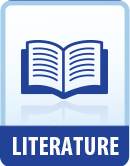|
This section contains 1,284 words (approx. 4 pages at 400 words per page) |

|
Line 1:
The words "clasps," "crag," and "crooked" associate the eagle with age: "craggy," for instance, is still used to describe a lined, age-weathered face. The hard "c" sound that begins each of these words also establishes a hard, sharp tenor to this poem's tone that fits in with the idea of the eagle's similarly hard, sharp life. The repetition of first sounds is called alliteration, and Tennyson uses it in this short "fragment" to convey a sense of the eagle's situation.
If there is any question in the reader's mind about why we should care to read about the habits of an eagle in the wild, Tennyson settles it at the end of the line, where he uses the poetic technique of personification in talking about the eagle's "hands." When Tennyson makes the association of the eagle's claws with human hands, he lets us know that the story...
|
This section contains 1,284 words (approx. 4 pages at 400 words per page) |

|




